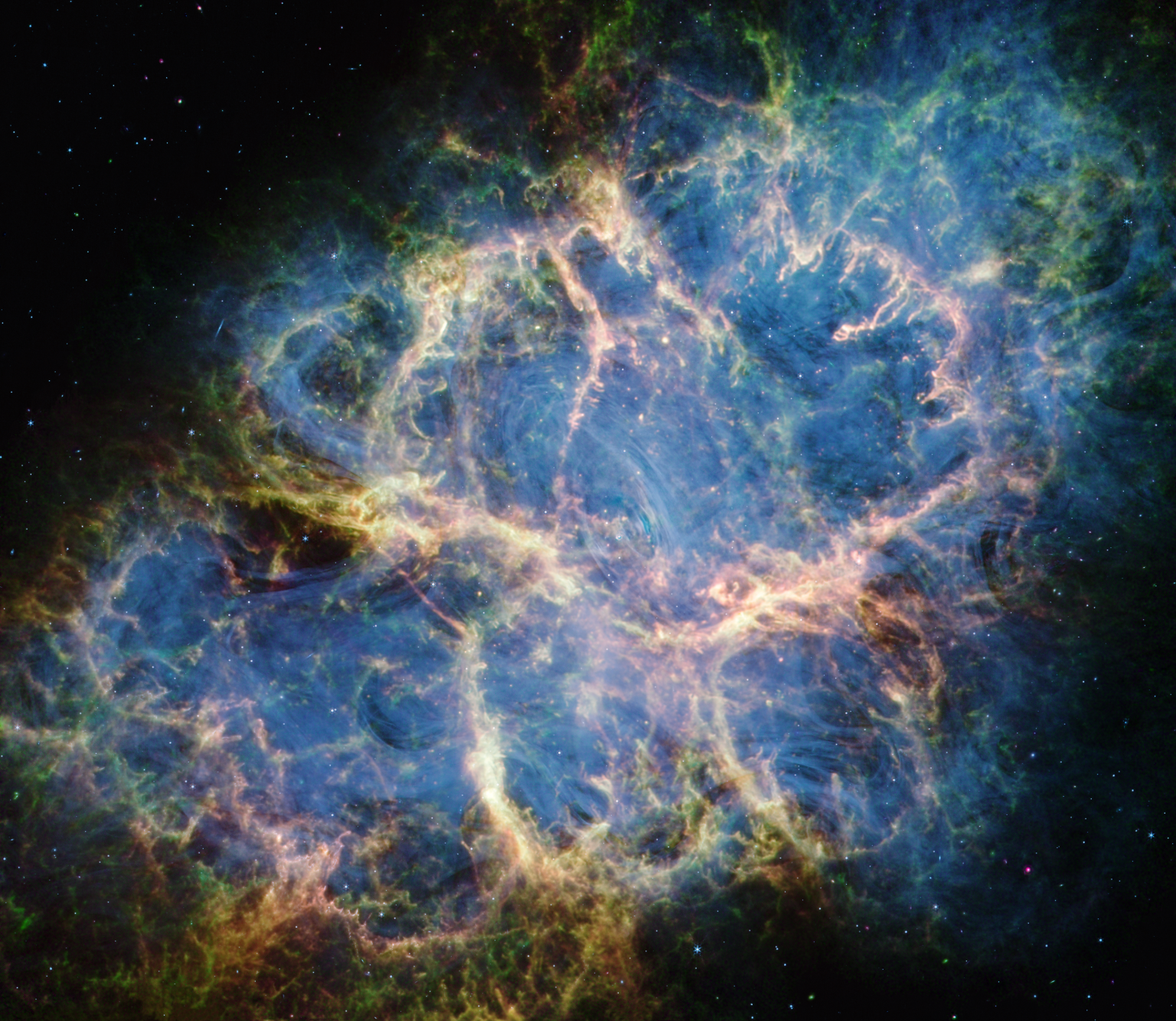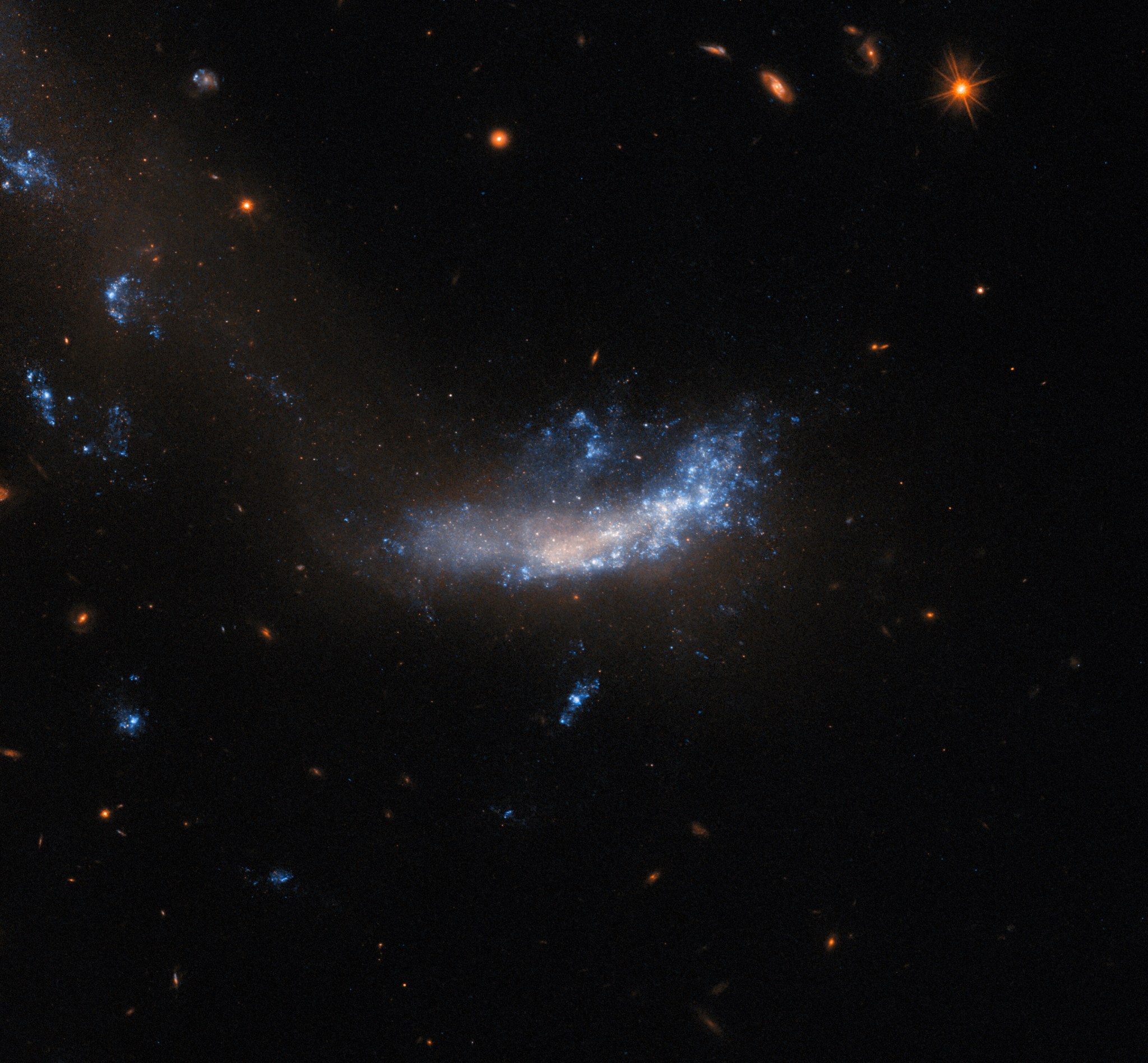6 Min Read Investigating the Origins of the Crab Nebula With NASA’s Webb This image by NASA’s James Webb Space Telescope’s NIRCam (Near-Infrared Camera) and MIRI (Mid-Infrared Instrument) shows different structural details of the Crab Nebula. New data revises our view of this unusual supernova explosion. A team of scientists used NASA’s James Webb Space Telescope to parse the composition of the Crab Nebula, a supernova remnant located 6,500 light-years away in the constellation Taurus. With the telescope’s MIRI (Mid-Infrared Instrument) and NIRCam (Near-Infrared Camera), the team gathered data that…
Read MoreTag: Supernovae
Hubble Views a Galactic Supernova Site
2 min read Hubble Views a Galactic Supernova Site This NASA Hubble Space Telescope image is of the small galaxy known as UGC 5189A. ESA/Hubble & NASA, A. Filippenko This image features a relatively small galaxy known as UGC 5189A, which is located about 150 million light-years away in the constellation Leo. This galaxy was observed by the NASA/ESA Hubble Space Telescope to study a supernova explosion in 2010 known as SN 2010jl. This particular supernova is notable because it was an exceptionally luminous supernova event. In fact, over a period of three years,…
Read MoreWebb Sheds Light on an Exploded Star
NASA’s James Webb Space Telescope’s new view of Cassiopeia A (Cas A) in near-infrared light is giving astronomers hints at the dynamical processes occurring within the supernova remnant. Tiny clumps represented in bright pink and orange make up the supernova’s inner shell, and are comprised of sulfur, oxygen, argon, and neon from the star itself. A large, striated blob at the bottom right corner of the image, nicknamed Baby Cas A, is one of the few light echoes visible NIRCam’s field of view. In this image, red, green, and blue…
Read MoreNASA’s Webb Stuns With New High-Definition Look at Exploded Star
6 Min Read NASA’s Webb Stuns With New High-Definition Look at Exploded Star NASA’s James Webb Space Telescope’s new view of Cassiopeia A (Cas A) Credits: NASA, ESA, CSA, STScI, D. Milisavljevic (Purdue University), T. Temim (Princeton University), I. De Looze (University of Gent) Mysterious features hide in near-infrared light Like a shiny, round ornament ready to be placed in the perfect spot on a holiday tree, supernova remnant Cassiopeia A (Cas A) gleams in a new image from NASA’s James Webb Space Telescope. As part of the 2023 Holidays at…
Read MoreSupernovae Swept Out Barnard’s Loop in Orion
Astronomers have mapped Orion in 3D to understand the origin of the large arc of Barnard’s Loop — and you can interact with the 3D image! The post Supernovae Swept Out Barnard's Loop in Orion appeared first on Sky & Telescope.
Read MoreCocoons Around Dying Stars Could Explain New Type of Stellar Explosions
A recently discovered type of stellar explosion might fit right in among the spectrum from regular supernovae to massive gamma-ray bursts. The post Cocoons Around Dying Stars Could Explain New Type of Stellar Explosions appeared first on Sky & Telescope.
Read MoreThe Flames of Orion and a Supergiant Star’s End
Astronomers watch starbirth and stardeath, capturing a unique view of a stellar nursery and witnessing a supergiant’s supernova. The post The Flames of Orion and a Supergiant Star's End appeared first on Sky & Telescope.
Read MoreStellar Remnant at the Core of Mysterious Flash Dubbed “The Cow”
Astronomers have identified the origin of a mysterious flash that occurred three years ago. The post Stellar Remnant at the Core of Mysterious Flash Dubbed "The Cow" appeared first on Sky & Telescope.
Read MoreSupernova Blasts Make Way for Star Factories
Some 10 million years ago, dying stars cleared a giant cavity in space and ultimately inspired a new generation of star formation. The post Supernova Blasts Make Way for Star Factories appeared first on Sky & Telescope.
Read More
